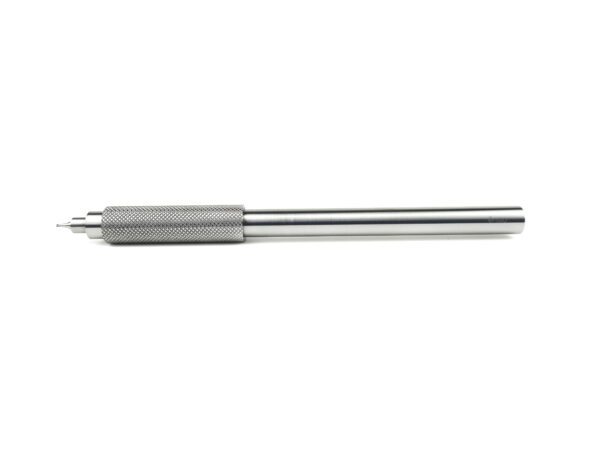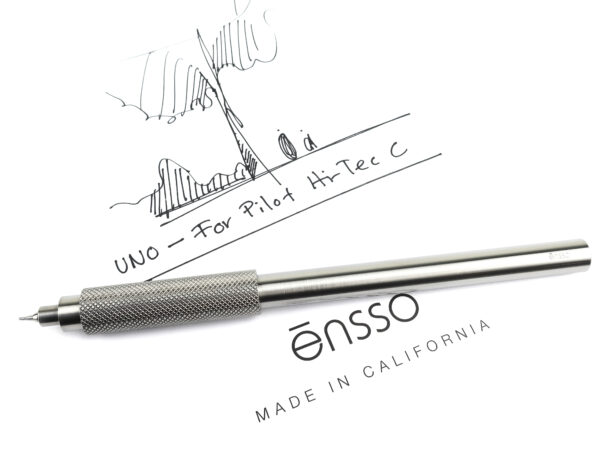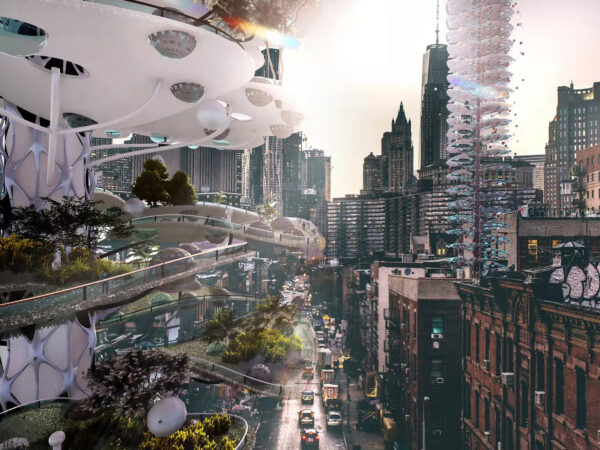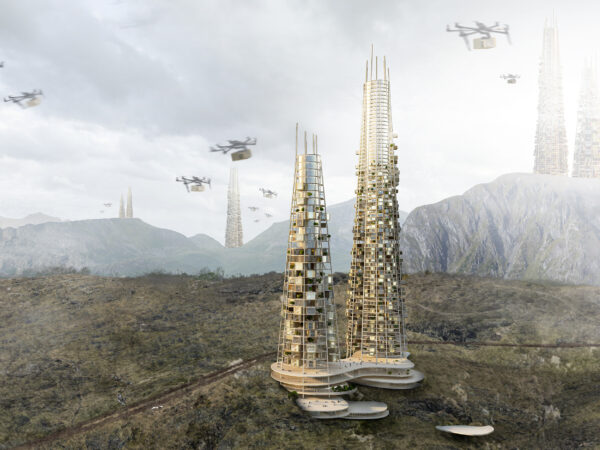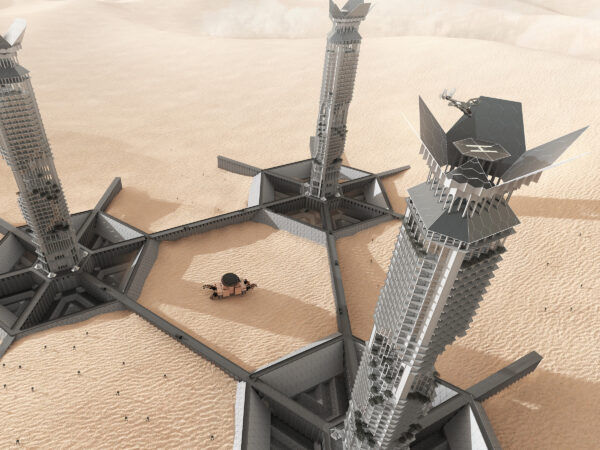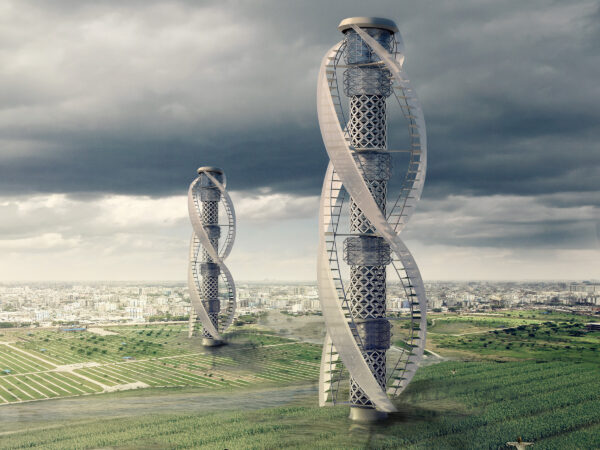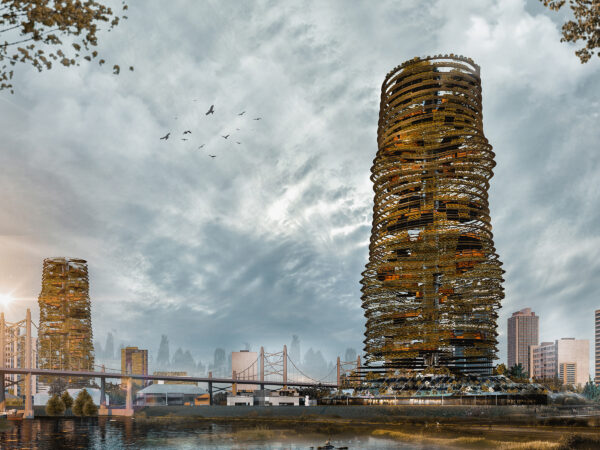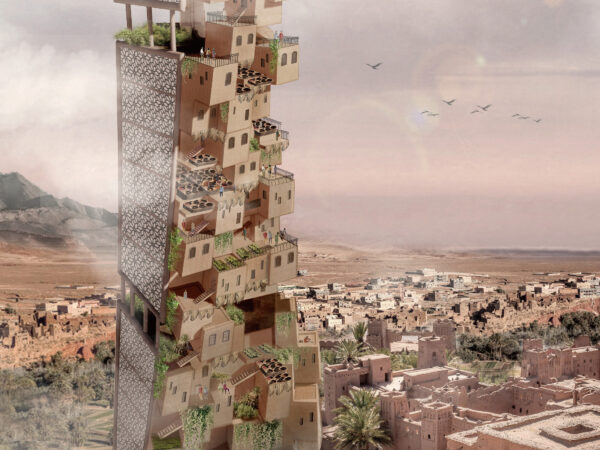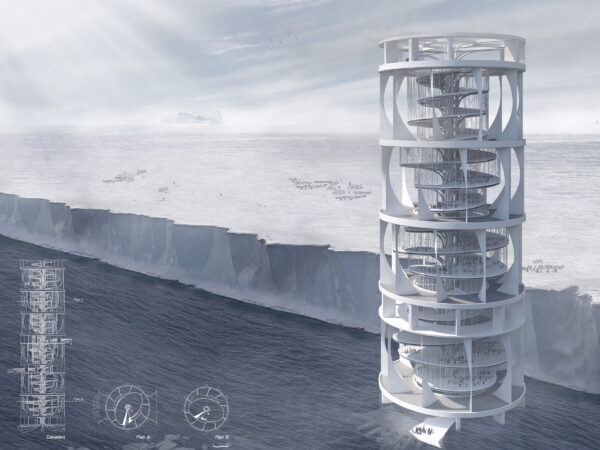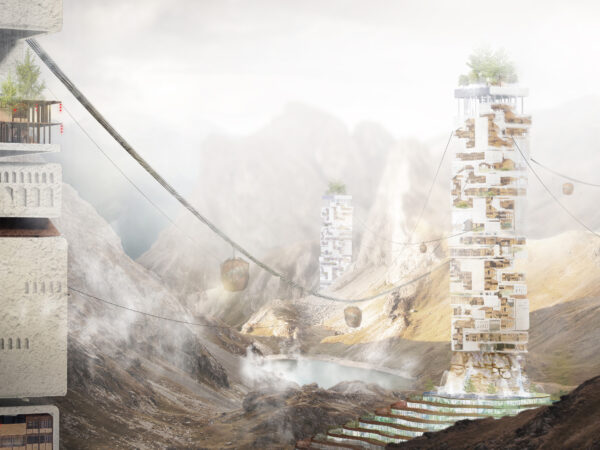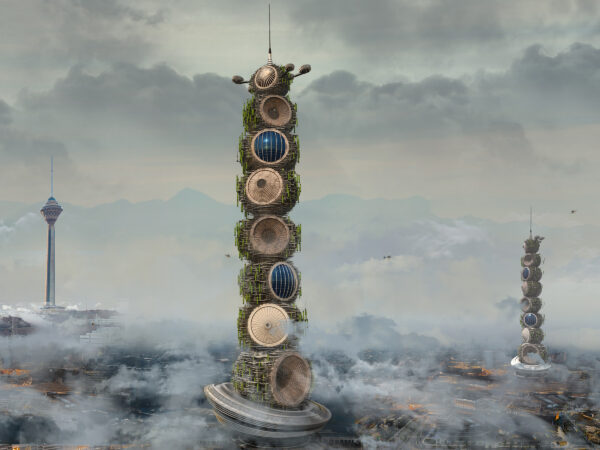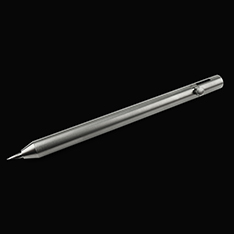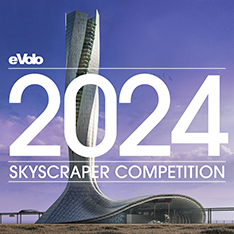A good pen is one of the most important tools that an architect or a designer need. There is one particular pen made by Pilot Pen Company in Japan that has a cult following around the world. We are talking about the legendary Hi-Tec-C gel ink pen, which is admired for its smooth writing experience, exceptional ink flow, and consistent line thickness. Back in 2015, California-based pen company ēnsso, designed a delightfully minimal pen for the Coleto refills, which are the smaller version of the Hi-Tec-C.
The new UNO XL pen is made in the USA from 100% stainless steel. It is designed for the large Hi-Tec-C refill and it features an innovative retractable twisting cap that doubles as holding section with a knurled diamond-pattern finish for added grip. The UNO XL is a paragon in minimalism with excellent proportions and weight. It measures 135 millimeters and weighs 37 grams. ēnsso is the recipient of the Red Dot Award, the Good Design Award, and the ICFF Award. Their designs are included in the permanent collection of the Chicago Museum of Architecture and Design and the San Francisco Museum of Craft and Design.

